- Home
- Alison Weir
Richard III and the Princes in the Tower Page 24
Richard III and the Princes in the Tower Read online
Page 24
Thus the Wydvilles joined Buckingham and others of their former enemies in a coalition to bring down Richard III, and plans for the rebellion, co-ordinated probably by Bishop Morton and communicated by Lewis, Bray and Urswick, were laid down during the next two to three weeks. Margaret Beaufort sent her chaplain Richard Fox to Brittany with the news that Elizabeth Wydville had agreed to acknowledge Henry as king if he married her daughter.
The time was indeed ripe for rebellion. In the first week or so of September, says Croyland, ‘the people living in the regions of the City of London and several other southern counties embarked upon avenging their grievances against Richard III’. The chief causes of their disaffection were Richard’s indiscriminate ‘plantation of northerners in the south’ and the desire to bring about the restoration of Edward V, who was then still thought by a considerable number of people to be alive. ‘When at last the people began considering vengeance, it was publicly proclaimed that Henry, Duke of Buckingham, had repented of his former conduct and would be the chief mover in this enterprise against the King.’ One of the London Chronicles states that ‘Many knights and gentlemen gathered together to the Duke of Buckingham, which intended to have subdued King Richard, as the said King Richard had put to death the Lord Chamberlain and other gentlemen, and thereupon many gentlemen intended his destruction.’ The fact that several small but influential groups of conspirators were now uniting under so powerful a magnate as Buckingham posed a serious threat to the King. And the rumours of the murder of the Princes, spread initially by Richard with the intention of removing the occasion for rebellion, gave it instead a new impetus.
Later that September, says Croyland, ‘a rumour was spread that the sons of King Edward had died a violent death, but it was uncertain how’. Croyland makes it clear that this was not the rumour initiated by the King, and implies that Buckingham and his accomplices were responsible for it. This rumour – disseminated over a wide area by agents working for Buckingham and Margaret Beaufort – spread fast and soon infiltrated the court itself. Within a short while it was the talk of the courts of Europe. This was what the conspirators wanted, for they meant to heap such opprobrium on Richard III that his people would be ready to rise up and join them when the time came. What was to their advantage was that there was no point in spreading a rumour that the King could so easily have disproved by producing the Princes alive; the story was entirely credible and people believed it. Within weeks of their deaths it was widely accepted that the Princes had been murdered in the Tower on the King’s command. This is hardly surprising since no-one had seen the boys since early July at the latest and the life expectancy of a deposed monarch was notoriously short. Evidence of how strongly the rumours were believed is to be found in the commonplace book of Richard Arnold, a London merchant, for the year 1482–3: ‘This year the sons of King Edward were put to silence.’ Fabyan says it was soon ‘the common fame’ that King Richard had killed his nephews.
The late fifteenth century was a violent age not noted for sentimentality. It was accepted that men often died horribly in battle or on the scaffold. Yet the murder of children provoked appalled shock and indignation. The Tudor chronicler Hall spoke for the majority when he wrote:
To murder a man is much odious, to kill a woman is in a manner unnatural, but to slay and destroy innocent babes and young infants the whole world abhorreth, and the blood from the earth cries for vengeance to Almighty God. Alas, whom will he save when he slayeth the poor lambs committed to him in trust?
Vergil says that ‘when the fame of this notable foul fact was dispersed through the realm, so great grief struck literally to the heart of all men that the same, subduing all fear, wept everywhere, and when they could weep no more, they cried out, “Is there truly any man who would not have abhorred so foul a murder?”’ Mancini also, it will be remembered, had referred to men weeping, and that was back in July when the Princes were still alive but people had begun to fear for their safety. King Richard, it was now felt, had committed an atrocious crime, and should pay for it.
The fact that people believed so implicitly in Richard’s guilt was of greater significance historically than whether or not he had actually committed the crime. It damaged irrevocably his already tarnished reputation, and it cost him the brief popularity fuelled by the progress. It also lost him much support among the Yorkist old guard who had served Edward IV, and it prompted many more people to join those who were already conspiring against him. Alive, the Princes had represented a potential threat to Richard’s security; dead, they were a very real danger.
This public belief in the death of the Princes had an immediate effect. There had been some conspirators, mainly in the South, who maintained the belief that Edward V still lived in the Tower, and whose chief motive in rebelling was his restoration. But now, faced with compelling rumours which were doubtless confirmed by links with Buckingham and Margaret Beaufort, these men also switched their allegiance to Henry Tudor and co-ordinated their plans with those of the other plotters, so that the planned rebellion became one cohesive movement to overthrow Richard III and establish a Tudor dynasty; this amounted, in effect, to a fresh outbreak of the Wars of the Roses. This time, however, the House of York would be opposing that of Tudor in a conflict which – in the final analysis – was the direct result of Richard III’s murder of the Princes.
Margaret Beaufort was now sending frequent messages and letters to her son in Brittany, urging him to come to Wales and join Buckingham in this righteous war against the usurper. Legally, as her attainder later stated, she was a traitor, ‘imagining the destruction of the King and assisting Henry, Duke of Buckingham, in treason’. The Countess, of course, would not have viewed her activities in that light. The triumph of her son might be only weeks away, and she would not contemplate failure since she must have known that it would herald the ruin of all the conspirators.
After his successful visit to York, Richard III travelled on 20th September to Gainsborough in Lincolnshire. Queen Anne had left for Middleham with the Prince of Wales and Warwick. By 24th September the rebel plans were complete and co-ordinated uprisings were scheduled to take place, according to the Rolls of Parliament, on 18th October.
There were to be five separate uprisings. In Kent, the Hautes, close kin to the Wydvilles, were to march from The Mote near Maidstone and Ightham Mote. Exeter was to be roused by Dorset, Sir Thomas St Leger, the husband of Richard III’s sister Anne, and members of the Lancastrian Courtenay family, earls of Devon. Lionel Wydville was to organise a rising in Salisbury. Buckingham would have an army standing at battle alert in Wales.
On 24th September, Buckingham, on behalf of both the Yorkist and Lancastrian factions, wrote to Henry Tudor, inviting him to invade England on 18th October, to deliver the realm from tyranny. Vergil says this invitation was conditional upon Henry swearing a solemn oath that once England was his he would marry Elizabeth of York and, says Croyland, ‘together with her take possession of the throne’.
Henry Tudor had until now made no effort to promote his claim to the English crown. He owed this new and unexpected opportunity to do so entirely to the murder of the Princes and its effect on Richard III’s reputation. He now found himself transformed from a penniless fugitive to king-elect in the eyes of many, and he lost no time in taking advantage of Buckingham’s invitation. While the conspirators were busy enlisting support among the gentry in the south of England, Henry and his uncle Jasper Tudor persuaded Duke Francis of Brittany to loan him 10,000 crowns, enough to employ 5,000 mercenaries and fit out some ships. It appears that some of the royal treasure appropriated by the Wydvilles went to finance the venture. By 2nd October Henry Tudor was ready to invade England.
The rebels were aware, even now, that King Richard could command awesome support. He could still count upon the loyalty of great magnates such as Norfolk and Northumberland and many northern nobles and gentlemen. However, the rumours concerning the Princes were now so widespread, and so damning to him, that his
position had been considerably weakened. By the beginning of October Richard must have been aware of the malicious rumours put about by his enemies and of their devastating effect upon public opinion. Croyland says he was aware that many of his subjects saw him as ‘the wretched, bloody and usurping boar’, the White Boar being his personal emblem.
He knew now that the Princes posed a greater threat in death than they had in life. An innocent man would have countered this threat by exhibiting the Princes alive or making a statement disclaiming all responsibility for their deaths, for which he could have offered a plausible explanation, and he would have produced their bodies for honourable public burial. But Richard kept silent and ignored the rumours. He neither denied them, nor made any statement about the fate or whereabouts of the Princes, nor accused anyone else of murdering them. His policy on the subject was complete silence, a silence he maintained to the end of his life: a silence that has condemned him in the eyes of most historians, and which probably confirmed his contemporaries’ worst suspicions.
On 3rd October, 1483, Henry Tudor’s fleet sailed from Brittany but a storm drove his ships back and kept them in port. From then on, nothing went as planned for the conspirators. Those in Kent rose prematurely on 10th October, their aim being to march on London. Unfortunately for the rebels, Norfolk was in the capital, and hearing of their advance he speedily raised a force and blocked the Thames crossing at Gravesend, thwarting their plans. The Duke then sent an urgent letter to the King in Lincolnshire, warning him what was afoot and breaking the news of Buckingham’s treachery, which had been disclosed to him by captured rebel leaders, along with details of the planned rebellion.
Richard III entered Lincoln on 11th October and there, the next day, he received Norfolk’s letter. Its contents shocked him deeply: he had not guessed that Buckingham had abandoned him, and the news came as a blow. Croyland says Richard received more information ‘bymeans of spies’, and in a very short time ‘the whole design of this plot became perfectly well-known to [him], who exerted himself in no drowsy manner, but with the greatest alacrity and vigilance’. Thanks to the premature rising in Kent, Richard had time to take effective measures against the rebels. He ‘contrived that, throughout Wales, armed men should be set in readiness around the Duke, as soon as ever he had set foot from his home, to pounce upon all his property’.
On 12th October Richard sent to Lord Chancellor Russell in London for the Great Seal, informing him that ‘here is all well and truly determined, for to resist the malice of him that had best cause to be true, the Duke of Buckingham, the most untrue creature living. We assure you there never was false traitor better purveyed for.’ Three days later Buckingham was publicly proclaimed a rebel and a traitor; on the same day violent gales swept across Wales and the West Country.
Buckingham was not yet aware that the King had learned of his treachery. On 18th October, the day on which Henry Tudor again sailed from France, the Duke raised his standard and, defying the gales, marched south towards the River Severn, planning to cross it and link up with the conspirators in the South-West, who had also risen as planned on that day. The next day the King sent proclamations to the South and West, advising the people that £1,000 would be given as a reward for the capture of Buckingham, and naming Morton, Dorset and others traitors. Meanwhile, Buckingham’s neighbour, Sir Thomas Vaughan, had seized the Duke’s stronghold at Brecknock for the King. Further proclamations were issued by Richard from Leicester on 23rd October: one, typically, accused Dorset of immorality and adultery with ‘Shore’s wife’. At around this time in Bodmin, Cornwall, it appears that a group of rebels actually proclaimed Henry Tudor king. Certainly, from this time on he adopted the royal style, signing his letters ‘Henricus Rex’ or ‘H.R.’. On 24th October, Richard III left Leicester with an army and marched south, hoping to intercept Buckingham’s forces and prevent them from meeting up with the rebels in the South West.
The gales, however, had accomplished his task for him. Ten days of storms and torrential rain had left the countryside flooded, with houses and bridges swept away; many people had drowned. Buckingham’s men, who were mostly unwilling Welsh conscripts who bore him several grudges, grew demoralised and resentful and eventually deserted him. Left alone in the Forest of Dean he took shelter with one of his tenants, Ralph Banastre, who betrayed him. The Duke, says Croyland, was ‘discovered in the cottage of a poor man’, and was delivered to the King’s men at Salisbury on 1st November by the Sheriff of Shropshire.
By then, the rebellion had collapsed; some leaders were taken, and the rest fled, either abroad or to sanctuary. In the confusion, Morton had escaped from Brecknock, later making his way secretly to Henry Tudor in Brittany. Buckingham’s five-year-old son Edward was smuggled to safety by his nurse, who shaved his head and dressed him as a girl. On 2nd November, two of Henry Tudor’s ships landed at Plymouth, but when Henry learned of the collapse of the rebellion he sailed back to Brittany at once, there to meet up with Dorset, the Courtenays and a considerable number of other refugees from England, including Lionel Wydville, who died soon afterwards.
Buckingham was not so lucky. Croyland says that the King came to Salisbury with a very large army. A trial took place and Buckingham was sentenced to death. He begged an audience of the King before he died, but Richard refused to see him. Many years later the Duke’s son alleged that his father had planned to stab Richard III with a hunting knife. Croyland, as a churchman, was outraged that the King gave the order for the execution to go ahead that same day, a Sunday: ‘Notwithstanding the fact that it was the Lord’s day, the Duke suffered capital punishment in the market place of that city.’
Vergil states that the King had several other conspirators executed, ‘even of his own household’, but only six are known to have perished at Tyburn as well as St Leger, Richard’s brother-in-law, at Exeter. When Parliament met in 1484 it passed so many Acts of Attainder that, says Croyland, ‘we do not read of the like being issued by the Triumvirate of Octavius, Antony and Lepidus. What immense estates and patrimonies were collected into the King’s treasury in consequence of this measure!’ A hundred people, including Henry Tudor and Buckingham retrospectively, were attainted, representing one-quarter of all attainders passed in fifty years. One-third were later pardoned by the King; their offices, however, were distributed amongst at least 100 of ‘his northern adherents, whom he planted in every spot throughout his dominions, to the disgrace and lasting and loudly-expressed sorrow of all the people in the South, who daily longed more and more for the hoped-for return of their ancient rulers rather than the present tyranny of these people’. This was one of the chief factors prompting a steady trickle of defectors to join Henry Tudor in Brittany, a trend that would escalate as time went on.
Although Richard punished Yorkists formerly loyal to Edward IV, Wydville partisans and Lancastrian diehards, he made no move against Elizabeth Wydville and her kinsfolk; in fact he offered clemency to Dorset, Morton and Richard Wydville. This may, however, have been a trap, and they wisely stayed in Brittany. Margaret Beaufort fared worse. She was attainted, but the Rolls of Parliament record that ‘the King, of his especial grace, remembering the good and faithful service that Thomas, Lord Stanley, has done and intends to do for him’, and not daring to offend Stanley, for he now needed all the support he could muster from the peers, ‘for his sake remits the great punishment of attainder on the said Countess that she deserves’. Instead, her servants were removed from her, she was disabled in law from owning any property, her estates were declared forfeit to her husband and she was placed under his jurisdiction. Henceforth she was known merely as Lady Stanley. These strictures, however, did not prevent Margaret Beaufort from continuing to work in secret against the King by spreading further rumours, nor from embarking on a campaign to convert Stanley to her way of thinking and win his support for her son.
Stanley was given Buckingham’s former office of Lord High Constable and remained in favour. However his wife’s persuasions eventu
ally had the desired effect and brought about his gradual alienation from the King. Richard, obviously, did not trust him; indeed, he would shortly have cause to regret his clemency to Lady Stanley.
On 25th November, 1483, Richard returned in triumph to London. He now appeared invincible, but this was largely an illusion: the rumours about the princes had cost him many supporters, high and low, and he could not rely on the loyalty of those left to him. Buckingham’s fall had brought to prominence three great magnates, Norfolk, Stanley and Northumberland, and the King meant to retain their support, even if he had to buy it. Towards those who had opposed him in the past he would from now on adopt a policy of conciliation, winning over some with lucrative offices and grants. It was also essential to gain, if not the love, then the approval of the people, and to this end Richard made, in the months ahead, strenuous efforts to present an image of himself as a sovereign worthy of respect, a man of high morals and political integrity, keen to uphold the liberties of Church and State, a man whose patronage it would be worth seeking. Richard hoped to establish himself as a popular ruler before his enemies had time to retrench for a further attack on him.

 Richard III and the Princes in the Tower
Richard III and the Princes in the Tower Britain's Royal Families: The Complete Genealogy
Britain's Royal Families: The Complete Genealogy The Lady in the Tower: The Fall of Anne Boleyn
The Lady in the Tower: The Fall of Anne Boleyn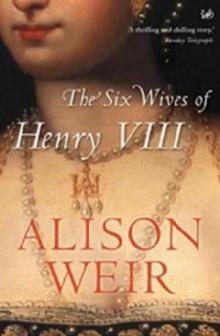 Six Wives of Henry VIII
Six Wives of Henry VIII Elizabeth of York: A Tudor Queen and Her World
Elizabeth of York: A Tudor Queen and Her World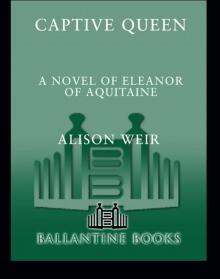 Captive Queen
Captive Queen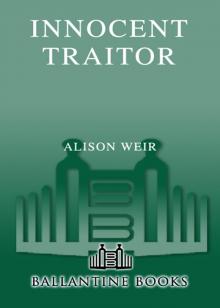 Innocent Traitor
Innocent Traitor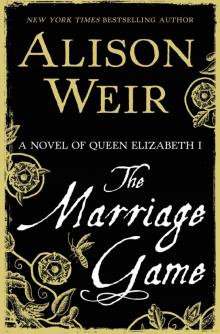 The Marriage Game
The Marriage Game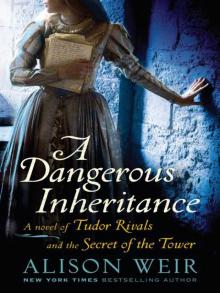 A Dangerous Inheritance
A Dangerous Inheritance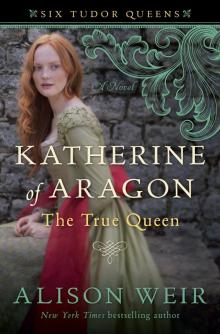 Katherine of Aragón: The True Queen
Katherine of Aragón: The True Queen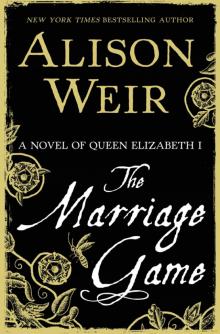 The Marriage Game: A Novel of Queen Elizabeth I
The Marriage Game: A Novel of Queen Elizabeth I Princes in the Tower
Princes in the Tower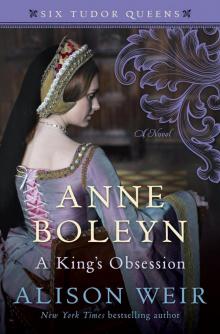 Anne Boleyn: A King's Obsession
Anne Boleyn: A King's Obsession Traitors of the Tower
Traitors of the Tower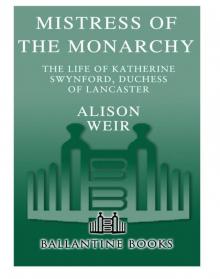 Mistress of the Monarchy: The Life of Katherine Swynford, Duchess of Lancaster
Mistress of the Monarchy: The Life of Katherine Swynford, Duchess of Lancaster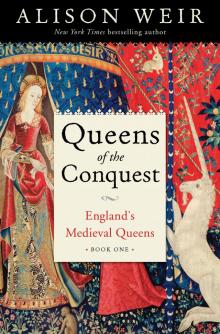 Queens of the Conquest: England’s Medieval Queens
Queens of the Conquest: England’s Medieval Queens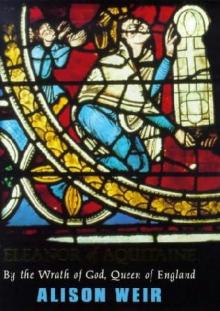 Eleanor of Aquitaine: A Life
Eleanor of Aquitaine: A Life Mary, Queen of Scots, and the Murder of Lord Darnley
Mary, Queen of Scots, and the Murder of Lord Darnley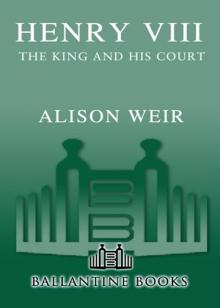 Henry VIII: The King and His Court
Henry VIII: The King and His Court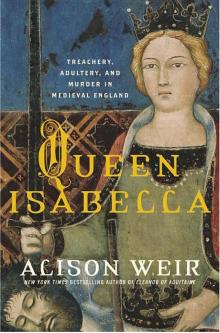 Queen Isabella: Treachery, Adultery, and Murder in Medieval England
Queen Isabella: Treachery, Adultery, and Murder in Medieval England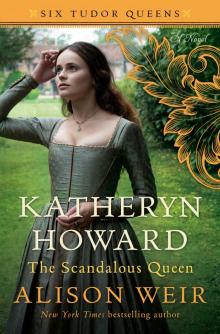 Katheryn Howard, the Scandalous Queen
Katheryn Howard, the Scandalous Queen Arthur- Prince of the Roses
Arthur- Prince of the Roses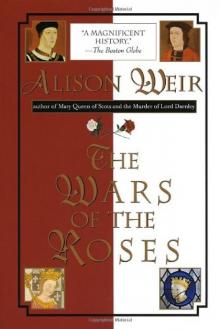 The Wars of the Roses
The Wars of the Roses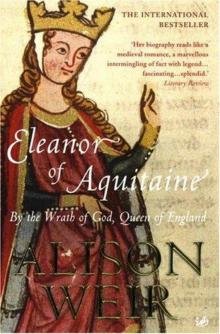 Eleanor of Aquitaine: By the Wrath of God, Queen of England
Eleanor of Aquitaine: By the Wrath of God, Queen of England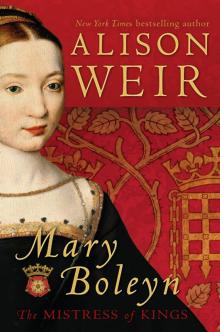 Mary Boleyn: The Great and Infamous Whore
Mary Boleyn: The Great and Infamous Whore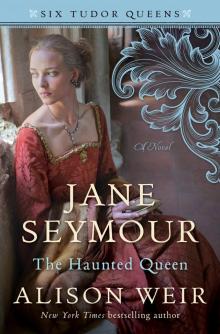 Jane Seymour: The Haunted Queen
Jane Seymour: The Haunted Queen Anna of Kleve, the Princess in the Portrait
Anna of Kleve, the Princess in the Portrait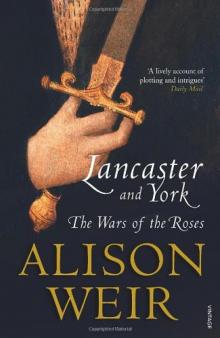 Lancaster and York: The Wars of the Roses
Lancaster and York: The Wars of the Roses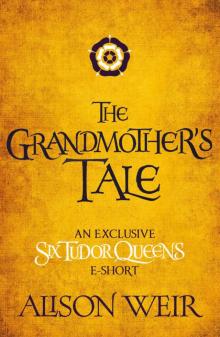 The Grandmother's Tale
The Grandmother's Tale The Princess of Scotland (Six Tudor Queens #5.5)
The Princess of Scotland (Six Tudor Queens #5.5)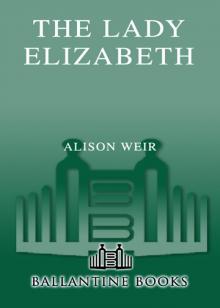 The Lady Elizabeth
The Lady Elizabeth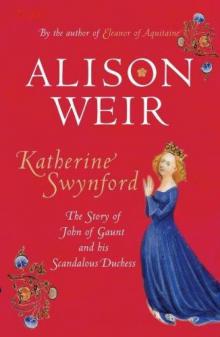 Katherine Swynford: The Story of John of Gaunt and His Scandalous Duchess
Katherine Swynford: The Story of John of Gaunt and His Scandalous Duchess The Curse of the Hungerfords
The Curse of the Hungerfords The Lost Tudor Princess: The Life of Lady Margaret Douglas
The Lost Tudor Princess: The Life of Lady Margaret Douglas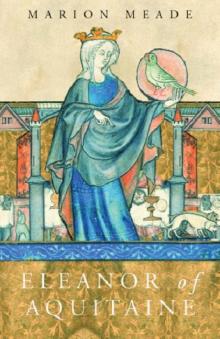 Eleanor of Aquitaine
Eleanor of Aquitaine Mistress of the Monarchy
Mistress of the Monarchy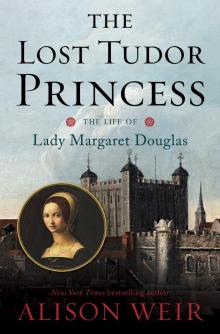 The Lost Tudor Princess
The Lost Tudor Princess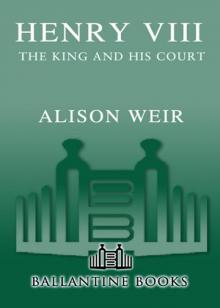 Henry VIII
Henry VIII Anne Boleyn, a King's Obsession
Anne Boleyn, a King's Obsession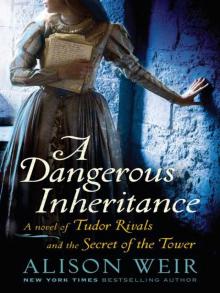 A Dangerous Inheritance: A Novel of Tudor Rivals and the Secret of the Tower
A Dangerous Inheritance: A Novel of Tudor Rivals and the Secret of the Tower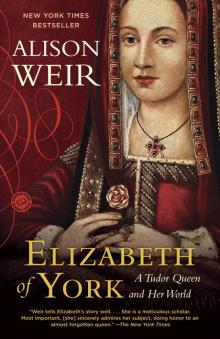 Elizabeth of York
Elizabeth of York Katherine of Aragon, the True Queen
Katherine of Aragon, the True Queen Katherine Swynford
Katherine Swynford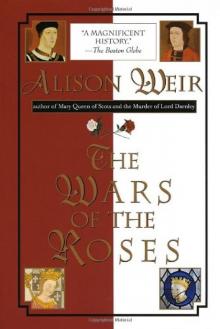 Wars of the Roses
Wars of the Roses Queens of the Conquest
Queens of the Conquest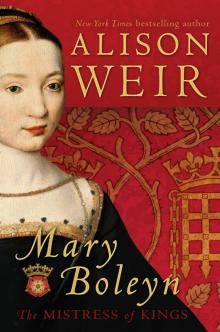 Mary Boleyn
Mary Boleyn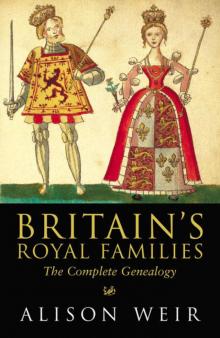 Britain's Royal Families
Britain's Royal Families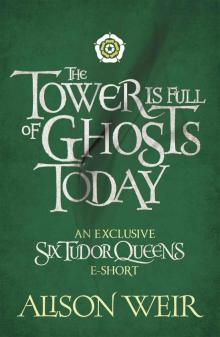 The Tower Is Full of Ghosts Today
The Tower Is Full of Ghosts Today Life of Elizabeth I
Life of Elizabeth I Anne Boleyn A King's Obssession
Anne Boleyn A King's Obssession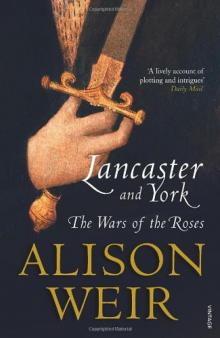 Lancaster and York
Lancaster and York Jane Seymour, the Haunted Queen
Jane Seymour, the Haunted Queen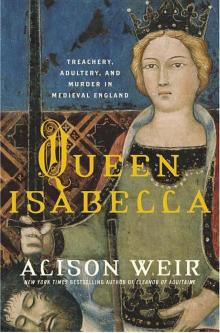 Queen Isabella
Queen Isabella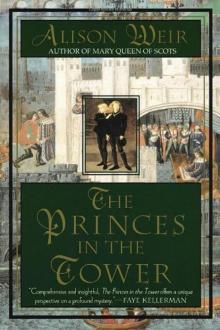 The princes in the tower
The princes in the tower